Curriculum Maps


Literacy:
The nursery children will continue to listen to stories from the ‘Must Read’ list and join in confidently with repeated phrases and refrains. A range of high quality texts underpin all the learning in nursery and inspire a range of child led activities within the environment.

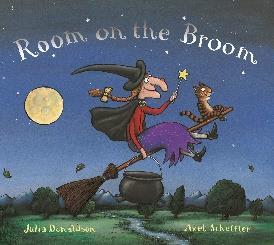
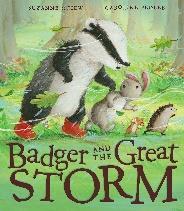
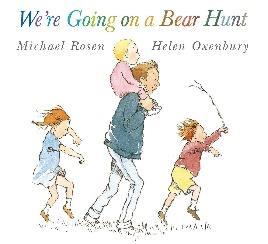


Children will continue to recognise their special letter and name in a variety of different scenarios within the nursery environment. They will also be encouraged to give meaning to the marks they make, both indoors and outdoors.



Communication and Language:
Children will continue to develop their listening skills. They will identify what it means to be a good listener and remain quiet and respectful when other children are talking. Children will be prompted to expand their awareness of using the correct tense in daily conversations, with adult support. Nursery staff will continue to model correct and appropriate talk for the children and further develop their pronunciation of words.
Expressive Arts & Design:
Children will continue to express themselves creatively and will be encouraged to follow an example to create a finished product. They will continue to make marks with paint and use a variety of textures and materials when doing collage activities.
Children will continue to learn and sing a variety of nursery rhymes and songs. Role play and pretend play will be strongly encouraged in the environment
Mathematics:
The children will continue to sing songs daily that focus on counting forwards and backwards. The children will be exposed to numbers 0-5 in the environment and will have lots of opportunities to practise counting.


Children will continue to access grouping activities, where they can sort objects in terms of colour, size and shape. The children will have continued opportunities to look at amounts and use language such as, ‘lots’, ‘more’, ‘less’ and ‘the same’.

Nursery Curriculum Map
Autumn Two
Additional Information:
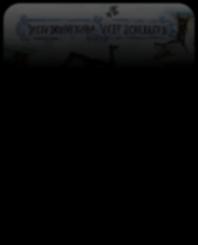
We would greatly appreciate if parents could ensure that children come to nursery in a warm winter coat, hat and gloves. We want to ensure children are warm enough to play in the outdoors whatever the weather
Important dates

Parents evenings 14th 16th November
Nursery nativity – 8th December
Last day of term 22nd December
Understanding the World:
Nursery will celebrate well known festivals and celebrations such as Hanukkah and Christmas.

Children will be learning about the changing weather and the seasons. They will start to monitor the weather daily and be encouraged to talk about what they see using a wide range of vocabulary. The children will be introduced to the concept of democracy through our British values at Throckley by voting for which story we read in class. Everyone in Nursery has a say in what we learn!
Physical Development:
During their PE lessons, children will to begin to work with a partner and continue to practise key movement skills such as crawling, jumping and climbing. Children will have lots of opportunities to go up steps and stairs when exploring the school building and grounds. Children will be encouraged to use the correct tripod pencil grasp during their mark making activities.
Personal, Social and Emotional Development:
Nursery staff will continue to promote sharing and patience as children begin to understand the need to wait for their turn.
Children will continue to care for their own personal hygiene by washing their hands regularly and brushing their teeth.
Children will continue to access areas of the classroom independently and will develop their confidence around familiar adults.
Mathematics:





In Reception, it is essential that children have a solid understanding of number. In order to achieve this concrete understanding, they must revisit learning multiple times. Children will count objects in different arrangements and will know that the final number they say is the total. They will also be taught how to match amounts and use their knowledge to decide if a group has more or less.

Within this half term, children will be taught and encouraged to use positional language in their activities, such as ‘under’, ‘on’ and ‘over’. They will also explore shape, with circles and triangles being the main focus.
Expressive Arts & Design:
Children will have the opportunity to use 3d materials and construction to make structures. They will be encouraged to discuss their ideas and creations through daily talk They will also experiment with different textures when creating through various continuous provision. Children will be continue to learn about various body percussion to respond to music from around the world. They will replicate choreographed dances within the classroom. As always, there will be lots of opportunities for singing and dancing throughout Reception, too!
Communication and Language:
Children will continue to learn the ‘Talk Rules’; and understand why listening is so important. They will also understand the expectation and importance of participation and discussion throughout the day Children will listen attentively to stories and will be able to respond to what they hear. They will be able to understand and follow prepositions within instructions and shall be encouraged to use them accurately in their speech. They will be taught subject specific vocabulary, which will be an integral part of their learning.
Literacy:
Children will take part in daily phonics sessions. During these sessions, they will begin to recognise and form individual letters, following the ‘Read, Write, Inc.’ scheme. They will also learn how to identify the initial sound in words.
Children will be given lots of opportunities to develop their mark making skills. We will be working hard to ensure effective pencil grips are used. This will support children when writing their name and practising the formation of taught letters.
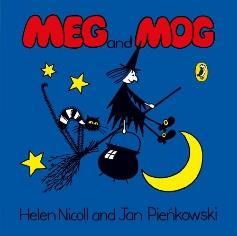


All of our learning in Reception will be inspired by high quality texts, which the children will have ample time to listen to and revisit in their ‘Must Read’ library.

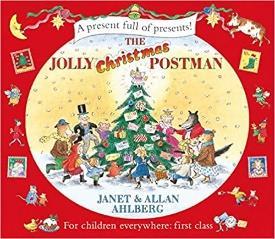
Reception Curriculum Map
Autumn 2
Physical Development:
Children will work on their skills to negotiate space and obstacles in a safe environment and will develop an awareness of working within their own space. They will move with consideration for others when working in smaller spaces, such as the woodland area
Children will think about safety and risk when completing an outdoor activity and will explore the school grounds with a range of terrain.
Children will continue to work on their cutting and sticking skills, developing independence They will learn how to make lines on paper using vertical, horizontal and anti clockwise movements. Within their PE sessions, they will practise various movement activities within teams and continue their work on jumping and throwing.
Understanding the World:
Children will be continue to learn about time through a number of stories which are set in the past, present and future. They will continue to talk about the days of the week and time of the year. Reception will further consider people, cultures and the community through learning about the lives of people around them and the roles of characters through stories. They will be exposed to a range of different world wide festivals, such as Hanukkah and Christmas.
The school grounds will be used for the children to explore seasonal change between autumn and winter. They will also visit the school allotment to make careful observations. The surrounding wildlife and plants will be observed and children shall explore the use of photographs to present their findings.




Personal, Social and Emotional Development:
We will continue to work on the daily routines in school which allow children to become self regulated and ready to learn. Children will be encouraged to share resources and take turns within activities. Reception have learned the foundations of the ‘Zones of Regulation’ and will continue to use this in order for the children to independently begin to manage feelings and emotions.
The children will be taught about bonfire safety and staying safe online. They will continue to learn about the importance of dental hygiene and be able to discuss their family members and who they live with.
Additional Information:
The weather continues to be unpredictable, please ensure your child is suitably dressed for learning outdoors. Waterproof coats in case of showers are necessary. Remember, we all need a PE kit in Reception, too.
Please keep a look out for exciting learning heading your way on Seesaw. Don’t forget to like the post or add a comment, we love hearing from you! We also love seeing the adventures you get up to at home when you add your own posts.
Year 1 Curriculum Map
Mathematics: In Mathematics, we will be comparing quantities of length/height, weight/mass and volume/capacity using equality and inequality symbols. We will explore numbers to 20 looking at part-whole relationships, order and how numbers can be represented. Finally, we will explore 2D and 3D shapes.
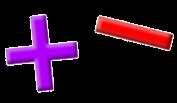
Autumn 2
Science – Seasonal Changes:
In Science, we will explore everyday materials. We will learn to sort materials/objects, name everyday materials and group by materials/objects by their properties.
Geography – What is the weather like where we live?
We will continue to learn the names and locations of the four countries and capital cities of the United Kingdom and its surrounding seas. We will be discussing their seasonal and daily weather patterns. We will build on our knowledge of weather charts learned in reception.


Builds on different textures of materials; features of classroom environment (EYFS)
Art
History - How do we get around?
In history we will be building on our knowledge of transport learned in the early years. Our focus will be on trains, what transport was like before the invention of the train and why the train is important. The children will also learn who George Stephenson was and why he is significant.
* Links to DT
English: we will jump on board a train by reading ‘The Train Ride’ by June Grebbin. We will build on our writing skills to write captions and short simple sentences for pictures relating to the book. We will write a story using similar characters and plot as a basis for our own. We will then explore descriptive language in ‘Pick a Pine Tree’ by Patricia Toht. We will use the language we have explored to write a simple description of a decorated Christmas tree.
In Art, we will explore mark making with paint using primary colours. We will use the work of Mondrian as a focus. This builds on the children being able to hold drawing tools correctly which they learned in the early years.











DT- Can you build with bread?
The children will continue their work on identifying a range of construction materials. They will use a combination of materials to build a model house. They will investigate how materials can be changed by heat or water.
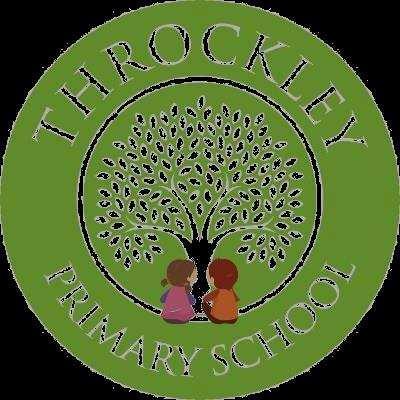
* Links to history, computing and science
* Link to RE, science and the school value of respect.
Phonics - Children will have a daily phonics lessons and will continue to be taught to read using the Read Write Inc phonics scheme. They will learn 3 new sounds each week and will practise reading words containing new and previously taught phonics through decodable books matched to their ability.

ICT/Computing:



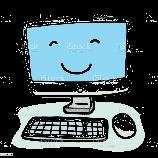
The children will be using iLearn2 to create art, music and comic books.
RE – What is precious?



We will explore Judaism and will compare this to Christianity. We will make links and compare the common theme of giving gifts at Christmas and Hanukkah.

PE – Dance


This builds on the music and digital art they created in EYFS.
*Links to Music, Art and DT

Children will build on their understanding of the symbolism of candles and how they’re used in both religions. They will explore the idea that Jesus is God’s gift to the world.


This term, we will develop our skills in dance. We will learn through a range of movements and exercises practise and develop our agility, balance and coordination.
Builds on EYFS fundamental skills.
Music: Pulse, rhythm, performing and listening and appraising
In Autumn term, we will play games, perform notation as body percussion, identify a variety of instruments by their sound and use them to play simple notations, listen to orchestral/folk/modern music, identify and compare the moods, emotions and genres of two songs. Our learning will culminate in a performance of a folk song.
PSHE: Physical Health and Mental Wellbeing
The children will continue to focus on their Mental Wellbeing. They will learn through the Zones of Regulation curriculum how to recognise their feelings and regulate their emotions.

Reading and Spellings at home:

To reach their full potential, children must be reading aloud with an adult at home every night. Reading develops skills which are invaluable across the whole curriculum and this extra practise can have a significant impact on the amount of progress made, and the speed in which it is made. When you are reading or practising sounds with your child, please remember to sign in their reading record.
Maths Basic Skills:

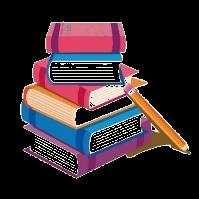
Every Friday, we will be having a maths basic skills quiz. This will help the children to improve their fluency of our addition and subtraction skills and help them really embed their number bonds.
Knowledge organisers which outline the key content covered in History, Geography, Science and R.E. will be uploaded onto Seesaw. Please take a look and quiz your child on their newly acquired knowledge!
Homework: In this half term, children will continue to receive one piece of homework each week. The focus will alternate between phonics and maths on a fortnightly basis. Homework will be sent out on Friday afternoons and will be required back in school by the following Friday. Please encourage and support your child with their homework by making sure it is completed.
English:
In our English lessons this term, we will be continuing with our text ‘The Lighthouse Keeper’s Lunch’. We will be using our imagination to design a disgusting sandwich along with a set of instructions for how to make it, so we can scare away the greedy seagulls. We will explore the use of imperative verbs, adverbs and fronted adverbials to make our writing more detailed and descriptive.

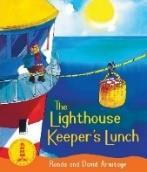

To sprinkle some Christmas magic on our learning at the end of term, we will explore a variety of festive poetry and become poets by creating our own verses
*Link to Geography
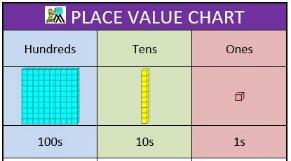
Year 2 Curriculum Map
Autumn
Mathematics:
In Mathematics, we will be delving into the concept of subtraction, with a focus on real life problem solving contexts. Children will become confident when using mathematical vocabulary related to subtraction (such as minus, difference, take away and less).

Science: Living things and their habitats:
This half term, we will build on our knowledge of common animals from Year 1. We will explore both world and microhabitats and understand why they are crucial for the survival of the animals that live there. We will also use our knowledge and understanding to develop simple food chains, showing links to predator and prey.







We will then be extending our knowledge of addition and subtraction by adding or subtracting two 2 digit numbers. This will consolidate our knowledge of place value and numbers to 100.

Geography
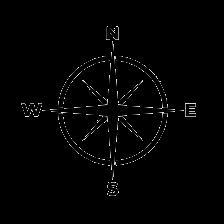
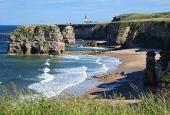


What is special about our local coastline?







This unit builds upon our Year 1 knowledge of local landmarks, human and physical geographical features of the local area and use of aerial maps. We will develop our previous knowledge of the UK countries, capitals and surrounding seas using a map, atlas or globe to locate them.
We will use simple compass directions (North, South, East and West) and locational and directional language [for example, near and far; left and right], to describe the human and physical features of our local coastlines.
*Link to English and History
*Link to Geography
Design Technology
How do you waterproof a hat?
We will tap into our scientific knowledge to test and sort a range of everyday materials to determine which would be most suitable for a waterproof hat.
*Link to Science
Computing:

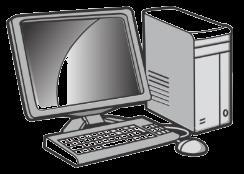
In Autumn, we will utilise the programmes iLearn2 and Project Evolve to discuss ways to stay safe online and be a responsible user of technology. We will build on our abilities to use digital art from Year 1 to create more complex designs and images.

PSHE: Health and Wellbeing
We will make links between our physical and mental health. We will discuss how being active, eating well and looking after our personal hygiene all contributes towards our overall health and wellbeing.


PE Attack, Defend, Shoot









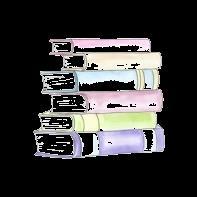
In PE this half term, we will be sending and receiving a variety of balls and refine ways of controlling our bodies whilst navigating equipment. We will link and apply combinations of skills such as dribbling and passing into football and basketball team games.
Phonics:

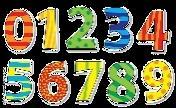
We will continue our learning of Set 2 and Set 3 sounds to successfully segment and blend appropriate words. Book Time is a part of each phonics session and allows children to embed their knowledge through exploration of phonetically decodable texts.
Basic skills tests: Every week, we will be testing our maths basic skills on a Friday morning. We will send the focus each week out to you in reading record books.
Reading at home:
Music:

We will build upon our knowledge of pulse and rhythm through active listening, appraising and singing & performing.
To reach their full potential, children must be reading aloud with an adult at home every night. Reading develops skills which are invaluable across the whole curriculum and this extra practise can have a significant impact on the amount of progress made, and the speed in which it is made. When you are reading, or practising basic skills with your child, please remember to sign in their reading record for a chance to win prizes.
RE: How do religious people express their sense of community?


We will be sharing special stories and interpreting what they mean to us and others. We will build on our understanding of different religions to reflect on the importance of beliefs. We will be introduced to Sikhism, where we can explore similarities and differences.
Knowledge organisers which outline the key content covered in History, Science and R.E. will be uploaded onto Seesaw
Homework:
In Year 2, children will receive homework through Seesaw every Friday that will consolidate their learning from the week. This is required to be completed by the following Friday.
Please support your child with their homework, encouraging them to talk about similar tasks they have been doing in school, so that they become confident with articulating their learning.
English: The reading focus for this half term will be ‘Stone Age Boy’ by Satoshi Kitamura. This links to our learning in history lessons as we explore the Stone, Bronze and Iron Age. Children will build towards a written outcome by writing a recount in the form of a diary entry. It will entertain the reader with adventures from back in time. Applying the VIPERS reading disciplines, children will broaden and deepen their understanding of vocabulary, inference, predictions, explanations, retrieval and summaries in our whole class reading.

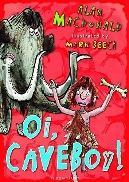
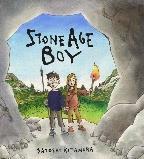
Year 3 Curriculum Map






Autumn 2




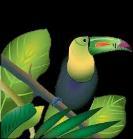





Mathematics: In mathematics, children will build on their knowledge of numbers to 1000. They will count forwards and backwards in multiples of 2, 10, 20, 5, 50, 25 and 100 to 1000. Later in the half term, children will apply their prior learning to partition numbers, reason and solve problems using measurements of mass, capacity and volume.
Science Rocks: Children will group and compare rocks based on their appearance and physical properties. They will describe how fossils are formed and understand how the combination of rocks and organic matter make soil. Linking to PSHE, children will learn about the career of a palaeontologist.



RE – Religions in the Local Community.

Children will explore and analyse religions around our local area by collecting and interpreting evidence from different sources. They will develop a sense of how others express individuality.
History – How did human civilisation change during the Stone, Bronze and Iron Age? This unit builds upon children’s learning of innovation from Year 1 and 2. Children will explore the changes to Britain over time and use chronological knowledge to order events. Using primary and secondary sources, they will compare everyday life in the Stone Age and explain the development of civilisations.
Geography – How significant is the Amazon Rainforest? This unit builds upon children’s learning of forests in Year 2 Spring term. They extend their knowledge of lines of latitude to include the Tropics of Cancer and Capricorn. Children will also increase their understanding of climate by learning about the tropical climate zone and their understanding of climate change. New learning encompasses the layers of a rainforest, indigenous tribes and deforestation.

Art – Drawing and Painting
Children will use a range of materials including paint to create different marks. They will mix colours using a variety of both primary and secondary colours. Using varying painting techniques, children will explore tonking and sgraffito.
DT Textiles
Children will enquire, ‘How can you make a box out of cloth?’ They will select and apply solutions to stiffen fabric to ultimately make a box.
Computing: This half term, children will apply their prior learning to deepen their understanding of making comics, music and digital art as well as explore new content such as infographics.




PSHE Mental Wellbeing, Health and Internet Safety and Harms: Children will apply their learning around Z of R to secure their understanding of feelings, emotions and behaviours. They will explore how being active, eating healthily and having quality sleep can support our mental wellbeing.







Music: Children will create 4 bar rhythms using crotchet, quavers, minims and rests. They will perform rhythms at two different tempos (andante and allegro) using a backing track. Children will listen to music in 4/4 and 3/4 and tap along, keeping a steady tempo. They will identify ostinato patterns and be introduced to semibreves.


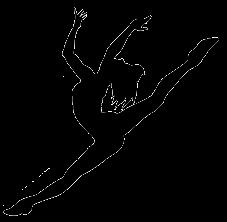


PE – Dance: Children will incorporate dynamics into movements and create dances that convey feelings and emotions. Children will work with a partner and small groups to evaluate and improve performance.


French: Children will learn the names of the countries and capitals of the UK as well as the numbers up to 6. They will continue to build upon Paris landmarks and primary and secondary colours.
Times Tables and Basic Skills:
Children should all be able to quickly recall addition and subtraction facts to 100 and the 2, 5 and 10 times tables. This year we will be catering our learning towards the 2, 4 and 8 times tables. It is essential for children to be accurate and quick with tables so that they can confidently access the full maths curriculum. Keep practising for your weekly Friday tests!

Reading and Spellings at home:
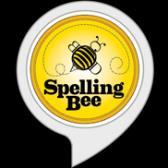
To reach their full potential, children must be reading aloud with an adult at home every night. Reading develops skills which are invaluable across the whole curriculum and this extra practise can have a significant impact on the amount of progress made, and the speed in which it is made. When you are reading or practising spellings with your child, please remember to sign in their reading record for a chance to win fantastic prizes.
Knowledge organisers, which outline the key content covered in History, Geography, Science and R.E. will be uploaded onto Seesaw. Please take a look and quiz your child on their newly acquired knowledge!
Homework: In Year 3, children will receive two pieces of homework each week. They will have one piece of English or maths homework and one piece focussed on times tables/basic skills practice. Homework will be sent out on Friday afternoons and will be required back in school by the following Friday morning! Please encourage and support your child with their homework by making sure it is completed on time. This will consolidate your child’s learning as well as helping them earn achievement stars.
English:
This half term, the children will begin a new book called, ‘Stitch Head’ by Guy Bass (a gruesome and scarily witty story about a lonely, almost human creature made by a mad professor in the sinister Castle Grotesque. Stitch Head's life is turned upside down when Fulbert Freakfinder's Travelling Circus rolls into his home town. Through reading and sentence stacking lessons, Year 4 will discuss and debate whether animals should be allowed to be used in the circus. We will also take inspiration from the author’s writing style to create their own rhyming verses.
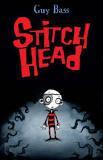

Year 4 Curriculum Map
Autumn 2





Mathematics:
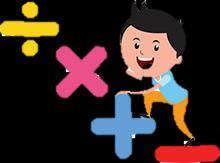
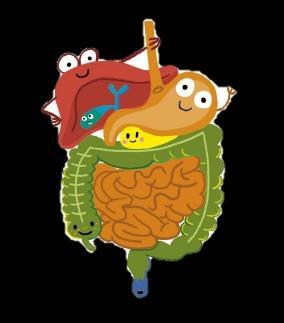

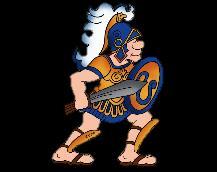
Children will apply their place-value knowledge from Autumn 1 to known additive and multiplicative number facts (scaling facts by 100). Children will identify regular polygons, including equilateral triangles and squares. They will then use their knowledge of shape and addition to find the perimeter of regular and irregular polygons. For the first time, children will begin their progression with times tables looking at patterns in the 3, 6 and 9 times tables.
Science (Biology): Animals Including Humans


In Autumn 2, children will continue to work with Mr Reid-Milligan to identify different teeth types and research and act out the digestive system. Children have a chance to explore the digestive system further in a GROSS experiment which could get messy! Towards the end of this half term, children will construct food chains looking at producers and consumers.
History: How have the Ancient Greeks influenced our society?
In history, children will continue to use primary and secondary sources to understand the lives of Ancient Greeks. After looking at the typical daily life of an Ancient Greek, Year 4 will decide whether they were treated equally in their society. This half term will end by looking at what the Ancient Greeks did for us in terms of inventions and how they have influenced events such as the Olympics.
Geography: Location, location, location – Where is your ideal home?
This half term, children will continue to describe land use in prehistoric times. They will further explore hill forts, and other settlements using grid references and maps. Their new knowledge and understanding will finally help them to write an advert for a prehistoric cave dwelling! Keep a close eye on Twitter for their ‘out of this world’ outcomes!
DT: Food and nutrition
To finish the autumn term, Year 4 will be exploring the differences between freshly made food and mass produced food. They will use their knowledge to make soup and bread which they can’t wait to share with their grown ups.
Art: Painting
This half term, pupils will examine a part of a flower using magnifiers and viewfinders before sketching and then enlarging it. They will develop the techniques of overpainting and wet on wet, as well as make tertiary colours.
Computing:

Using iLearn2, children will continue to develop their media skills using iPads. Children will experience how we create animation using eBook creation and 3D design.

PSHE – Physical and mental Wellbeing

PE – Dance:
RE – Why do people make religious journeys?

Children will develop their understanding of symbolic language and look for meaning in accounts and stories from a variety of religious texts and significant books.
Year 4 will learn to understand the scale of emotions that different people feel and where and who they can turn to for support. They will relate this to other subjects and continue to use Zones of Regulation.
Children will work to include freeze frames in routines, practise and perform a variety of different formations in dance and develop a dance to perform as a group with a set starting position. Children will apply their skills and techniques that they acquire in these lessons in their performances for grown-ups in ‘Jingle’ assemblies!


Reading and Spellings at home:







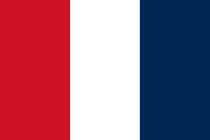

Times Tables:
French:

In Year 4, children will continue to become more familiar with oral questions, answers and sentence building. They will revisit concepts of liaison and elision by practising 4 new masculine nouns (with vowels opening). They will add the first fronted adverbials to their sentences, as well as 4 new colours and look at 5 new Paris landmarks.
Children should all be able to quickly recall all times tables up to 12 x 12 = 144 now. It is essential for children to be accurate and quick with tables so that they can confidently access the full maths curriculum. Keep practising!
To reach their full potential, children must reading aloud with an adult at home every night. Reading develops skills which are invaluable across the whole curriculum and this extra practise can have a significant impact on the amount of progress made, and the speed in which it is made. When you are reading or practising spellings with your child, please remember to sign in their reading record for a chance to win fantastic prizes.
Music:
This half term, children will listen to some reggae to demonstrate syncopation. They will play Sammy the Snake Bingo with Crochets as well as clapping and playing back syncopated rhythms.
Knowledge organisers which outline the key content covered in History, Science and R.E. will be uploaded onto Seesaw. Please take a look and quiz your child on their newly acquired knowledge!
Homework: In Year 4, children will receive two pieces of homework each week. They will have one piece of English or maths homework and one piece focussed on times tables/basic skills practice. Homework will be sent out on Monday and will be required back in school by the following Monday! Please encourage and support your child with their homework by making sure it is completed on time.
Homework:
English: In English, children will be reading Harry Potter and the Philosopher’s Stone by JK Rowling. Using the chapter The Vanishing Glass as inspiration, children will write their own fantasy stories that include speech. Following this, children will use the event of the troll invading the school as inspiration to write a newspaper report. Throughout the term, children will be examining JK Rowling’s writing styles and choices as an author to aid them in developing their own authorial voice and making language and vocabulary decisions based on the formality of the tone they wish to portray.
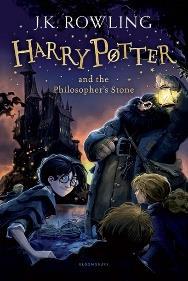

Year 5 Curriculum Map
Autumn Term 2
Science – Biology - Animals including humans
Building on their Year 4 learning about humans, this term, children will learn about changes in humans throughout their life. Beginning with embryos in the womb, children will learn the physical and emotional changes that they can expect to go through as they progress through their adolescence years and into adulthood. In addition, they will explore gestation periods of different animals and conduct a scientific enquiry about baby growth rate.




Mathematics: In mathematics, children will continue their work on negative numbers, working on word problems and calculating intervals between positive and negative integers. Children will also work on short multiplication, using their times tables knowledge to work out calculations. Additionally, children will work on short division, dividing 2 and 3 digit numbers by a single digit number.
Design and
Technology

– Cooking and Nutrition: Why are our diets different today? Children will continue to explore the diets of other countries and will make a mezze bowl as well as evaluating the dishes they made before half term to decide which was the best!

Geography – How significant are lines of latitude and longitude? Children will explore lines of longitude in relation to time zones. Then, building on their learning of the positions of climate and biomes zones from Autumn 1, children will use lines of latitude and longitude to make predictions about what a location maybe like when it is noon in the UK in a given month.
History – How did our local area affect the Battle of Newburn
Ford? Children will continue their Battle of Newburn Topic, where they will travel back to the 1600s to understand what caused the battle and they will study key historical figures, such as Charles I, Oliver Cromwell and Henry VIII. Children will learn about the importance of religion during the 1600s. and how it shaped society.
RE – What are the similarities and differences in beliefs between different faith traditions? Children will learn about the different places of worship, such as churches, synagogues and mosques. We will also look at the different denominations of Christianity.
PSHE: Physical Health and Mental Wellbeing



Children will continue to consider how they can take care of their mental health. They will understand the importance of being active, eating well and making informed choices. Children will also explore online safety.





ICT/Computing:


Building on their learning about computing networks in Year 4, children will explore email, Bluetooth and online collaboration. This term, we will also cover online safety including understanding their online reputation and how to keep information secure and private.
PE – Dance
Children will perform different styles of dance and will work in groups to compose their own simple dances.

Children will also refine and improve dances, adapting them to include the use of space, rhythm and expression. They will recognise and comment on dances, suggesting ideas for improvement.
Reading and Spellings at home:


Times Tables:
French:
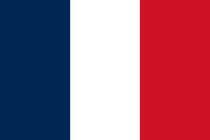

This half term, Year 5 will progress their use of fronted adverbials by revising Paris landmarks. They will apply their knowledge of the numbers 1-12 by learning to tell the time, as well as understanding the time difference between France and the UK.
Now children can quickly recall all times tables up to 12 x 12 = 144 it is essential for children to practise so they do not forget and maintain their speed and accuracy. This will help them confidently access the full maths curriculum. We will have weekly times tables tests on Fridays to check children’s recall so keep practising regularly at home!
To reach their full potential, children must be reading aloud with an adult at home every night. Reading develops skills which are invaluable across the whole curriculum and this extra practise can have a significant impact on the amount of progress made, and the speed in which it is made. When you are reading or practising spellings with your child, please remember to sign in their reading record for a chance to win fantastic prizes!
Knowledge organisers which outline the key content covered in History, Geography and Science will be uploaded onto Seesaw. Please take a look and quiz your child on their newly acquired knowledge!
Homework: In Year 5, children will receive one piece of homework each week relating to work we have done that week. Homework will be sent out on Friday afternoons on Seesaw and will be required back in school by the following Friday! Children can also take a paper copy if they would prefer. Please encourage and support your child with their homework by making sure it is completed as this supports their learning in school.
English: For our reading focus this half term, we will be beginning the term by exploring The Body Book, which links closely to our science unit ‘The Circulatory System’. Pupils will be experiencing hands on lessons to explore key vocabulary, combined with grammatical devices to produce an informative non chronological report. Later in the term, get ready for The Nowhere Emporium. This magical novel is full of twists and turns leaving you always wanting more. During this book study, pupils will analyse the text to develop their reading skills before building up to write an adventure narrative that incorporates a range of figurative language and grammatical devices.
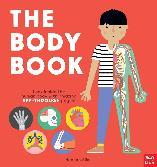
Year 6 Curriculum Map
Autumn 2





Mathematics:
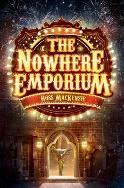



In Mathematics, we will continue to practise the formal method of short division before we begin to divide by two digit numbers using long division. Pupils will then revisit their understanding of fractions. In this unit, they will add, subtract, multiply and divide fractions as well as convert between mixed numbers and improper fractions. Pupils will make links between fractions, decimals and percentages using chocolate! As always, we will be putting times tables at the forefront of our maths. learning.
Science – The Circulatory System:
In this unit of study, we will be exploring how blood travels around the body through a range of exciting lessons.
Children will discover which vital organs are part of this system and unearth how each place a crucial role in transporting oxygenated and deoxygenated blood around the body. Focusing in on the heart, children will observe a heart dissection to provide them with a first hand experience of witnessing the different components of this important organ. Finally, we will look at how diet, exercise and drugs impact the body both physically and mentally.
RE – What do I think about the nature and existence of God?
This half term, we will consider whether the concept of a God exists through debate and respectfully contemplate other viewpoints.

History – World War Two: Building on our understanding of the concept ‘empire’ and ‘civilisation’, children will use a range of disciplinary knowledge to answer the enquiry question, “How did conflict affect society?’ Through exploration of different sources, children will discover how evacuation impacted everyday life in Britain, especially for children.
Geography Economy: In geography, we will be exploring how a country’s land use impacts their economy. Through a case study of one of the poorest economies in the world (El Salvador), children will examine the challenges they face due to their geographical location.
DT – Does food affect the way you feel?
Children will develop their cooking techniques by exploring the difference between pre-made and processed foods. Deepening their understanding of nutritional balance.
Art Pupils will continue to master their drawing skills by creating a self-portrait inspired by Frida Kahlo.
ICT/Computing:






This half term, they will also continue to explore digital literacy, looking at how to be safe online and refreshing their knowledge and understanding of digital relationships; online bullying; and self-image and identity.

PSHE:
We will continue to use Zones of Regulation to explore mental well-being before considering ways we can maintain physical health. In November, children will partake in a Show Racism the Red Card workshop.
PE – Dance:
Looking at a range of dance techniques (canon, body positioning, repetition), children will practise a range of movements in order to create their own Haka.


While learning about the culture, children will examine other examples of a Haka routine in order to incorporate facial expressions that convey an emotion.
Reading and Spellings at home:

French:

In French, children will learn the names of the countries and capitals of the United Kingdom as well as spelling their names, learning different nationalities, formal address and classroom objects. They will also revisit months of the year.

Times Tables:
Children should all be able to quickly recall all times tables up to 12 x 12 = 144 now. It is essential for children to be accurate and quick with tables so that they can confidently access the full maths curriculum. Every week they will be tested on one. Keep practising!
Music: Building on their knowledge of rhythm and tempo, children will continue to practise their singing skills. They will look at how the arrangement of singing alters the mood of the song.
Knowledge organisers which outline the key content covered in History, Science and R.E. will be uploaded onto Seesaw. Please take a look and quiz your child on their newly acquired knowledge!
To reach their full potential, children must be reading aloud with an adult at home every night. Reading develops skills which are invaluable across the whole curriculum and this extra practise can have a significant impact on the amount of progress made, and the speed in which it is made. When you are reading or practising spellings with your child, please remember to sign in their reading record for a chance to win fantastic prizes.
Homework: In Year 6, children will receive two pieces of homework each week. They will have one piece of English homework and one piece of maths homework. Homework will be sent out on Monday afternoons and will be required back in school by the following Monday! Please encourage and support your child with their homework by making sure it is completed as this will aid them with their transition to secondary school.
